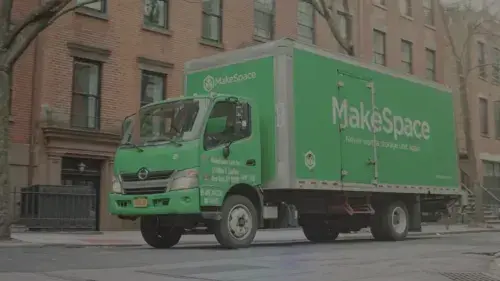3 MIN READ
Distressed Debt is Consistently Growing
- Real Estate Development
- Self Storage Industry
6 MIN READ
September 17, 2023

Last month the largest on-demand storage company, Clutter, sold itself in a distressed sale to Iron Mountain for $40MM. Clutter, and its predecessors, raised $439MM over the last decade trying to disrupt the traditional storage model by offering on-demand service, meaning employees would come collect and store items, returning them when the customer requested.
The moment Clutter folded marks what I would classify as the official end of the on-demand storage era.
So what happened?
When I came onto the storage scene in 2016, the industry was buzzing with discussions about the imminent disruption from on-demand storage companies.
You couldn’t commute in NYC without seeing a billboard that read something like this:

The concept wasn’t new, Public Storage had tried the concept in 2002 and failed.
When we published our original thesis in 2016 on storage, we highlighted on-demand storage as a risk, because if the economics were true, on paper the business model had the potential to remove the largest friction in the business: People hate the hassle of moving their stuff.
The on-demand thesis was simple:
On-demand storage had the potential to do to traditional self storage companies as Amazon did to big-box retailers by offering a superior experience. It would remove the hassle of moving the items into and out of the unit themselves at a comparable price.
How could they do this?
Instead of using expensive retail real estate to store customers' belongings close to the homes of the end user, these on-demand companies would pick up the items and transport them to a much lower-cost warehouse on the periphery of major metros, utilizing much cheaper real estate to store the goods.
With a large cohort of storage customers staying for a long period of time, the profits that they could make on these customers long term would offset the high upfront costs of having to pick up and transport the items.
One of these companies published their economics and made the assumption that customers would stay for an average of 29 months. If they did, they could make a lot of money, and the typical customer would look something like this:

One of the fatal flaws in the model was the assumption of how long customers ended up staying. In storage, there is a large group of customers that stay over two years, but there is also a large portion of customers that stay less than twelve months.
In on-demand storage, these customers cost a lot of money because they leave before the company can recoup the initial cost of acquiring them and picking up/dropping off their stuff. The on-demand companies ended up paying for customer leads that would only stay short term; they tried selling them to the REITs, but no one would buy them because it would only enable the on-demand model. This caused their customer acquisition cost to be much higher than in traditional storage.
Additionally, on-demand storage was and still is a largely unfamiliar product to the consumer. This means that you spend a lot more money because you must invest in an education process. The number of people willing to try something new is lower than those who already understand the product.
Ultimately, the economics likely looked more like this:

Additionally, what I suspect these operators found is that the average life of their customers was much shorter than they had expected. This means that many of the customers they were acquiring were actually costing them money (chart above).
Ultimately, it solidifies our thesis that the traditional self storage model is not susceptible to disruption from the on-demand model.
The on-demand model is not storage, it is a logistics business, and there are limitations on the efficiencies you can extract when you have a crew driving around half the day stuck in traffic trying to pickup and deliver customer items.
While the hype for on-demand storage seems to be dead for now, I foresee people continuing to try, but the outcome won’t be any different than it was for Clutter and the bunch.
We focus on supply and demand fundamentals, barriers to entry, and tracking moves in municipalities for both zoning and regulation.
The risks in storage don’t come from outside business model disruption, but rather from regulation around existing rental rate increases, and most notably, poor site selection in areas with little to no barriers for additional competitors to quickly build additional sites.
LOAD MORE
3 MIN READ
3 MIN READ
3 MIN READ
LOAD MORE